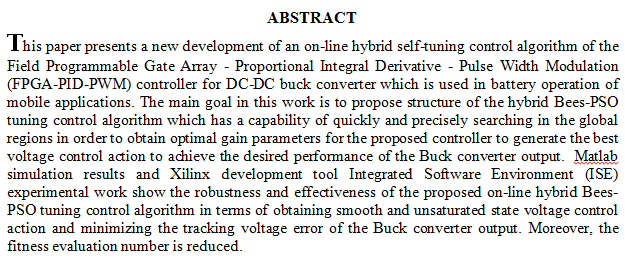
The ligand [Potassium (E)-(4-(((2-((1-(3-aminophenyl) ethylidene) amino)-4-oxo-1,4- dihydropteridin-6-yl) methyl) amino)benzoyl)-L-glutamate] was prepared from the condensation reaction of folic acid with (3-aminoacetophenone) through Schiff reaction to give a new Schiff base ligand [H2L]. The ligand [H2L] was characterized by elemental analysis CHN, atomic absorption (A.A), (FT-I.R.), (U.V.-Vis), TLC, E.S. mass (for spectroscopes), molar conductance, and melting point. The new Schiff base ligand [H2L], reacts with Mn(II), Co(II), Ni(II), Cu(II), Cr(III) and Cd(II) metal ions and (2-aminophenol), (metal : derivative ligand : 2-aminophenol) to give a series of new mixed complexes in the general formula:- K3[M2(HL)(HA)2], (where M=Mn(II) and
... Show MoreIn this work, the preparation of new multidentate Schiff-base lig and and its metal complexes are described. The formation of the lig and{ 2,2`((5-methyl-1,3-phenylene)-bis-(oxy))-bis-N`(E`)-2- hydroxybenzylideneacetohydrazide}[H2L] was prepared from the reaction {2,2-((5-methyl-1,3-phenylene)-bis-(oxy))- di-(acetohydrazide)}[M]precursor and salicylaldehyde in a 1:2 mole ratio, respectively. The reaction of the lig and [H2L] with (Cr+3 , Mn+2 and Fe+2 )metal ions in a 1:2 (L:M) mole ratio. Ligand and complexes were characterised via spectroscopic analyses; [FT-IR, UV-Vis spectroscopy,(C.H.N) microanalysis, chloride content, thermal analysis(TG), electrospray mass, magnetic susceptibility and conductivity measurements. The characterisation d
... Show Moreالوصف A simple chemistry method approach was used to synthesise new ligand derivate from L-ascorbic acid and its complexes. All of them were water-soluble and are used quite extensively in the medical and pharmaceutical fields. This study synthesised the new ligand derivative from L-ascorbic acid-base using the following steps: A 5, 6-O-isopropylidene-L-ascorbic acid was prepared by reacting dry acetone with L-ascorbic acid followed by reacting it with trichloroacetic acid to yield [chloro (carboxylic) methylidene]-5, 6-O-isopropylidene-L-ascorbic acid in the second stage. In the third stage, the derivative was reacted with (methyl (6-methyl-2-pyridylmethyl) amine to create a new ligand (ONMILA). This novel ligand was identified using
... Show More2-benzamide benzothiazole complexes of Pd(II) , Pt(IV) and Au(III) ions were prepared by microwave assisted radiation. The ligand and the complexes were isolated and characterized in solid state by using FT-IR, UV-Vis spectroscopy, flame atomic absorption, elemental analysis CHNS , magnetic susceptibility measurements , melting points and conductivity measurements. The nature of complexes in liquid state was studied by following the molar ratio method which gave results approximately identical to those obtained from isolated solid state; also, stability constant of the prepared complexes were studied and found that they were stable in molar ratio 1:1.The complexes have a sequar planner geometry except Pt(IV) complex has octahedral .
... Show MoreThe [2-hydroxy -1,2-diphynel-ethanone oxime] was reacted with 1,2- dichloroethan to give the new ligand [H2L].this ligand was reacted with some metal ions (Co(II),Ni(II),Cu(II),Zn(II) and Cd(II) in methanol as a solvent to give a series of new (1:1)complexes of the general formula [ M(HL)]Cl ,( where : M= Co(II),Ni(II),Cu(II),Zn(II) and Cd(II)) are isolated All compounds have been characterized by spectroscopic methods [ I.R , U.V -Vis ] atomic absorption . Chloride content along with conductivity measurements. From the above data the proposed molecular structure for (Co, Cu, Ni, Zn and Cd) complexes adopting a tetrahedral structure.
The precursor [W] [2-(2-(naphthalen-5-yl) diazenyl)-4-amino-3-hydroxynaphthalene-1sulfonic acid] was synthesized from reaction of diazonium salt with 1-amino-2-naphtol-4sulfonic acid. Then the tridentate Schiff base ligand type ONO was synthesized from the reaction of the precursor with salicyaldehyde in 1:1 mole ratio to produce the ligand H2L [2-(2-(naphthalen5-yl) diazenyl)-4-(2-hydroxynaphthalen-3-yl)methyleneamino)-3-hydroxy salicyalene-1-sulfonic acid],the reaction achieved in methanol as a solvent under reflux. Spectroscopic methods IR, U.V, 1H,13C-NMR was used to characterize the ligand. Complexes of [CrIII, CoII, NiII and CdII] ions were also prepared through reaction of ligand with metal salts in 2:1 mole ratio at reflux,
... Show MoreThe N-[(2,3-dioxoindolin-1-yl)-N-methylbenzamide] was prepared by the reaction of acetanilide with isatin then in presence of added paraformaldehyde, the prepared ligand was identified by microelemental analysis, FT.IR and UV-Vis spectroscopic techniques. Treatment of the prepared ligand with the following selected metal ions (CoII, NiII, CuII and ZnII) in aqueous ethanol with a 1:2 M:L ratio, yielded a series of complexes of the general formula [M(L)2Cl2]. The prepared complexes were characterized using flame atomic absorption, (C.H.N) analysis, FT.IR and UV-Vis spectroscopic methods as well as magnetic susceptibility and conductivity measurements. Chloride ion content was also evaluated by (Mohr method). From the obtained data the octahed
... Show MoreThe bilateral sagittal split osteotomy (BSSO) is the most popular orthognathic procedure performed by maxillofacial surgeons to treat skeletal class II and class III and to correct mandibular asymmetries. The study aimed to evaluate the lingual splitting patterns and lateral bone cut end (LBCE) in bilateral sagittal split osteotomy (BSSO) and their relation with the ramal thickness and the presence of impacted third molars using cone beam computed tomography (CBCT). This prospective observational study included patients with mandibular prognathism who were treated with BSSO with or without Le Fort I osteotomy. Cone beam computed tomography was used to measure the ramal thickness preoperatively and to evaluate the LBCE, and the lingu
... Show More (1)
(1)
The adsorption behavior of Bismarck brown (BB) dye from aqueous solutions onto graphene oxide GO and graphene oxide-g-poly (n-butyl methacrylate-co-methacrylic acid) GO-g-pBCM as adsorbents was investigated. The prepared GO and GO-g-pBCM were characterized by Fourier transform infrared spectroscopy FTIR, which confirmed the compositions of the prepared adsorbents. Adsorption of BB dye onto GO and GO-g-pBCM was explored in a series of batch experiments under various conditions. The data were examined utilizing Langmuir and Freundlich isotherms. The Langmuir isotherm was seen as increasingly reasonable from the experimental information of dye on formulating adsorbents. Kinetic investigations showed that the experimental data were fitted ve
... Show More (11)
(11)
 (4)
(4)
